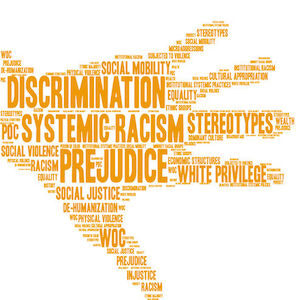By Dr. Ken Broda Bahm:

Juneteenth is now a federal holiday, and even as many would prefer action on voting rights protection, equal access to education and healthcare, and police reform, the symbol is still important. It highlights both the progress and the work to be done on race in this country. In our courtrooms, race is still one of the salient demographic factors that a juror might bring to their evaluation of a case. The conventional thought among experienced consultants and attorneys who pick juries, however, is that even setting Batson and parallel cases aside, it is simply more effective to select juries based on attitudes rather than demographics. This thinking is informed as much by practical experience as it is by direct research, although it is important to remember that the research supports it.
In the wake of highly-publicized incidents, protests, and trials, a group of researchers from Carleton University in Canada conducted one of the first studies on the role of both race, as well as attitudes toward police legitimacy, in determining reactions and mock trial verdicts in a police use of force case (Ewanation, Maeder & Yamamoto, 2021). The team found that far more mock jurors than they expected decided the case against the officer — a potential result of heightened awareness and opinion shifts on law enforcement. They also found that race mattered strongly, but that a good portion of that effect was explained by attitudes toward police legitimacy. In this post, I’ll share three implications of this research for jury selections that relate to police use of force.
Even When the Demographics Actually Matter, It is Still Better to Dig for Attitudes
Few situations would seem to be more racially determined than views on police use of force. The research reviewed in the article shows that it is very clear that past interactions with police determine attitudes toward police, and that demographics still strongly determine past interactions with police. Racial minorities, and especially black and Hispanic individuals in the U.S., still have more negative interactions and hold more negative perceptions of the police.
This is an example of an inverse pyramid, with attitudes being built on experiences, which may in turn be built on demographics. One takeaway from the study is that, even as strikes based on race are legally improper, race does actually have a strong effect on how jurors will view a police use of force case. However, most of that effect is due to differences in attitudes. In the study, nearly two thirds of the direct effect between race and verdict is explained by jurors’ perceived police legitimacy. Those who see less police legitimacy are more likely to find against the officer, and vice-versa. Ultimately, it is better to ask about that attitude rather than basing selection decisions, even implicitly, on race. Not only do you capture most of the effect that is tied to race, but you will also highlight the exceptions, since there are minorities with police-supportive attitudes, as well as white individuals with high levels of distrust.
But Lawyers Need to Ask for It
In this study, the researchers used something called the Police Legitimacy Scale or PLS (Tankebe, Reisig & Wang, 2016). The scale itself, available here, is a 16-item questionnaire with dimensions looking at lawfulness, distributive and procedural fairness, and effectiveness of police. In this study, the perceived lawfulness and fairness of the police mattered, but perceived effectiveness did not matter. Taken together, the other three dimensions of police legitimacy were effective in identifying individuals who would favor either the officer or the civilian in a police use of force case. So the attitude strongly matters, and police legitimacy is an important frame to consider when evaluating whether jurors will see a given use of force as reasonable or not.
And Judges Need to Allow It
One important obstacle to assessing the attitudes of potential jurors is that judges are not always keen to give it free rein. For example, in a police use-of-force case, questions about the legitimacy of the police might seem like they are asking potential jurors to prejudge the credibility of an entire class of witnesses in this case. But as understandable as this reaction to attitudinal questioning might be, I don’t think judges ought to limit it. The attitudes exist whether we measure them or not. Once selected, jurors can be instructed on what should and shouldn’t matter to their evaluations of credibility. But before that, the parties really should be able to learn about those attitudes, and judges aren’t doing anyone any favors by limiting voir dire. In fact, allowing voir dire on relevant attitudes is probably the best way to discourage the less effective and legally prohibited practice of basing strikes on race.
_
______
Other Posts on Race in Jury Selection:
- Race-based Strikes: Expect Fixes for the Problem (and Problems with the Fixes)
- Attitudes on Race: Consider that the Dog Whistle May No Longer Be Necessary
- Sunshine: Support Open Records as One Part of the Answer to Discriminatory Jury Selection
Ewanation, L., Maeder, E. M., & Yamamoto, S. (2021). Mock juror decision-making in a self-defence trial involving police use of force. Canadian Journal of Behavioural Science/Revue canadienne des sciences du comportement.